Abstract 2/2013
Table of content:
Grzegorz Krawczyk – Strategicmanagementof public transportdevelopmentin Poland
Radosław Bul – The tunnels Atocha – Chamartin as a basic element of high-speed rail network in Spain and Madrid’s commuter rail
Henryk Karbowiak, Andrzej J. Zajączkowski – 150th anniversary of tube in the world and 18th anniversary of tube in Warsaw
Marek Bauer – Disruptions in journey time of the buses using (separated) bus lanes on the entry to the intersections with traffic lights
Krzysztof Kołodziejczyk – Transport accessibility of Głuchołazy commune in relation to its tourist functions
Grzegorz Krawczyk
Strategicmanagementof public transportdevelopmentin Poland
Abstract: Strategic management is a commonly used process used to improve the competitiveness of the organization and the implementation of long-term goals. This approach is also used by public institutions to programme regional development. Due to the complexity of the socio-economic determinants of regional development it is necessary to use the systems approach taking into account multiple factors that shape competitiveness. Transportation system including public transport are included in this group of factors, and also require inclusion in the process of strategic management. The article presents the analysis of three types of strategic documents: the regional development strategies, transport strategies and plans for the development of public transport. Special attention is paid to the first two groups. The strategies can be divided into two major parts: diagnosis (including the strategic analysis), and projection. Following this system, the intensity and quality of the appeals of public transport system was discussed in the article. Comparison of the number of appeals on the level of SWOT analysis and subjective assessments of details of the specified objectives have been included as well. Conditions of creation of sustainable development of public transport have been presented with particular emphasis on the public consultation process.In the course of the study, it was pointed out that the public transport issues are being marginalized at the level of regional development strategies, both at the stage of diagnosis, as well as in the process of determining the main goals. Specification of activities is significantly more important on the level of the transport strategy, whose adoption is optional (as opposed to development strategies). Errors and omission that occur in the process of development of the strategic management of public transport have also been indicated in the paper. However, the appearance this issue in the most important planning documents has been assessed as a positive phenomenon.
Key words: public transport, strategy, planning,
Radosław Bul
The tunnels Atocha – Chamartin as a basic element of high-speed rail network in Spain and Madrid’s commuter rail
Abstract: Due to the existing concept of the construction of high-speed rail in Poland it is necessary to find a good practices of planning and technical solutions among high-speed rail systems implemeted in the worldwide. Despite the postponing of the implementation of this concept, the project should be realized in the future. A very important issue is to plan railway junctions, which are usually located in the large cities. One of the most interesting world`s examples of the construction of the railway network is the Spanish system. Spanish High – Speed Rail network development program is impressive and thanks to huge investments and implementations has a great influence on accessibility to main cities. Particularly interesting is the case of rail system in Madrid, which is a national main point of high-speed rail network. This paper presents the concept of tunnels Atocha – Chamartin construction and indicates their importance for improving the coherence of the railway network in Spain. It also presents the role of the tunnel as the main transport axis of the city. Example of tunnel in Madrid can be interesting because of its technical and planning solutions. Due to the potential development of high-speed rail in in Poland in the future, the solutions used in Madrid can also be adopted in the cities of our country.
key words: high-speed rail, Madrid, Puerta de Atocha, Chamartin, Madrid rail tunnel
Henryk Karbowiak , Andrzej J. Zajączkowski
150th anniversary of tube in the world and 18th anniversary of tube in Warsaw
Abstract: In January 2013 there was the 150th anniversary of the opening of the 1st tube line in the world – in London and in April 2013 there will be 18 years of operation of the first part of the 1st tube line in Warsaw. Authors define tube/metro as underground rail system designed to run big passenger traffic in big cities in a safe and fast manner. The article presents development of lines and tube systems worldwide and presents data about metro construction in Warsaw. Currently it is being estimated that in nearly 145 cities all over the world a tube system exists. These systems in cooperation with other means of public transport create a unified system of urban public transport. The most important value of the tube is its carriage capacity, that takes approximately 500 thousands passengers a day for one direction.In Warsaw the first tube line was opened in 1995 and 1st line (22 kilometers) was put in operation in 2008. Actually there is a 6 kilometers central sector of the 2nd tube line under construction. It has been estimated that the final line length of the tube in Warsaw will come to 70 kilometers.
Key words: passenger transport, tube, carriage capacity, succession time, safety,
Marek Bauer
Disruptions in journey time of the buses using (separated) bus lanes on the entry to the intersections with traffic lights
Abstract: In the article general description of the phenomenon of rise and overlapping of bus lines’ disruptions. Selected examples of own researches on the transport speed on the bus lanes in Cracow have been presented with the conclusion that disruptions in journey time are generated even if buses drive on bus lanes. This is why in the further part of the article an essay to specify factors influencing time loss of buses on the bus lanes has been undertaken. Firstly fateful factors have been highlighted, connected with the bus’ and other vehicles traffic and dislocation of passengers; thus behavior and environmental factors. Also factors of deterministic influence, connected with infrastructure of bus lanes and other streets’ elements as well those related to the traffic and transport organization have been presented. Bigger attention has been put on the problem of time loss of buses on the entry to the intersections with traffic lights. The discussion concerning causes for rise of time loss has been erected and then regressive model to calculate time for discharge of waiting line on the bus lane on the entry to the intersection and travel time in this queue depending on the length of this queue has been described. Although those models are of introductory character and – at the present form – are not fully representative for description of the phenomenon – they give appropriate view at its scale. In the paper also general solutions in the scope of the infrastructure and traffic organization that serve to shorten of queues on the bus lanes on the entry to the intersections have been presented.
Key words: passenger transport, public transport, bus lanes
Krzysztof Kołodziejczyk
Transport accessibility of Głuchołazy commune in relation to its tourist functions
Abstract: In the paper the transport accessibility of the Głuchołazy commune, located in the south-western part of the Opole voivodeship, was analysed. There were mentioned both the external and internal accessibility, all analyzed from the tourist point of view and in relation to the commune’s plans of tourist and spa functions development. The railway and road infrastructure is quite dense, however the role of train connections in the tourist movement is rather small. Only the North and South parts of the commune are serviced by passenger trains (by a Polish or Czech carrier accordingly), but there are no connections between those two tracks. Furthermore, Czech trains due to legal reasons can not stop in the centre of Głuchołazy, the passenger exchange is possible only at the remote main station. The bus transport is better organised, main links correspond with the tourist traffic, although there are still some problems. There are little direct connections with more distant parts of Poland; that forces changes, usually not appreciated by tourists. The internal connections are better in the southern part of the commune and along main roads, whereas some villages in the North part are served by only few busses during weekdays. Unfavourable are the reductions in number of busses during holidays and the lack of late-evening links during weekends.
Key words: transport accessibility, tourism, Głuchołazy commune.

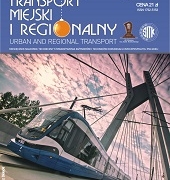 SITK RP
SITK RP 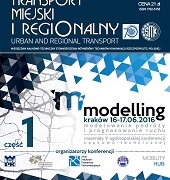 SITK RP
SITK RP 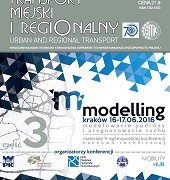 SITK RP
SITK RP 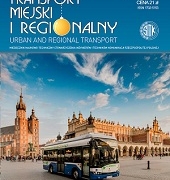
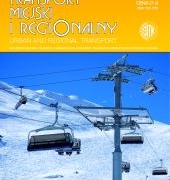 SITK RP
SITK RP 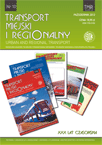 SITK RP
SITK RP 
 SITK RP
SITK RP SITK RP
SITK RP